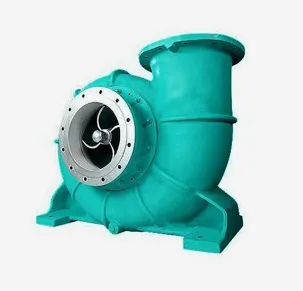English
- Afrikaans
- Albanian
- Amharic
- Arabic
- Armenian
- Azerbaijani
- Basque
- Belarusian
- Bengali
- Bosnian
- Bulgarian
- Catalan
- Cebuano
- Corsican
- Croatian
- Czech
- Danish
- Dutch
- English
- Esperanto
- Estonian
- Finnish
- French
- Frisian
- Galician
- Georgian
- German
- Greek
- Gujarati
- Haitian Creole
- hausa
- hawaiian
- Hebrew
- Hindi
- Miao
- Hungarian
- Icelandic
- igbo
- Indonesian
- irish
- Italian
- Japanese
- Javanese
- Kannada
- kazakh
- Khmer
- Rwandese
- Korean
- Kurdish
- Kyrgyz
- Lao
- Latin
- Latvian
- Lithuanian
- Luxembourgish
- Macedonian
- Malgashi
- Malay
- Malayalam
- Maltese
- Maori
- Marathi
- Mongolian
- Myanmar
- Nepali
- Norwegian
- Norwegian
- Occitan
- Pashto
- Persian
- Polish
- Portuguese
- Punjabi
- Romanian
- Russian
- Samoan
- Scottish Gaelic
- Serbian
- Sesotho
- Shona
- Sindhi
- Sinhala
- Slovak
- Slovenian
- Somali
- Spanish
- Sundanese
- Swahili
- Swedish
- Tagalog
- Tajik
- Tamil
- Tatar
- Telugu
- Thai
- Turkish
- Turkmen
- Ukrainian
- Urdu
- Uighur
- Uzbek
- Vietnamese
- Welsh
- Bantu
- Yiddish
- Yoruba
- Zulu
Telephone: +86 13120555503
Email: frank@cypump.com
Oct . 16, 2024 07:27 Back to list
waste pump for basement bathroom
Waste Pump for Basement Bathroom An Essential Guide
When it comes to designing a basement bathroom, one of the most crucial components to consider is the waste pump. A waste pump is an essential device that transports waste and wastewater from your bathroom to the main sewage line. Given the unique plumbing challenges posed by a basement location, investing in the right waste pump is imperative for functionality, hygiene, and overall efficiency.
Understanding the Function of a Waste Pump
A waste pump, often referred to as a macerator pump, is engineered to handle the removal of waste when gravity drainage is not feasible. Basements typically sit below the level of the sewer line, which means that without a waste pump, wastewater cannot flow naturally away from the bathroom. The waste pump uses a powerful motor and a macerating blade to grind up solid waste into a slurry before pumping it upward toward the main sewage system.
Types of Waste Pumps
When selecting a waste pump for your basement bathroom, it's important to understand the different types available.
1. Macerator Pumps These are the most common type used for basement bathrooms. They can handle both liquid and solid waste, thanks to their built-in blades that chop waste into smaller pieces. Macerator pumps also come with multiple inlets, allowing you to connect various fixtures such as toilets, sinks, or showers.
2. Grinder Pumps A grinder pump is a more robust option suitable for larger waste removal tasks. These pumps grind waste into a finer slurry, making them ideal for more extensive systems or multi-user environments.
3. Submersible Pumps These pumps can be submerged in the sewage basin and are designed for efficient and quiet operation. They are typically used in applications where space is limited.
Installation Considerations
Installing a waste pump in your basement bathroom may require some professional assistance, especially if you are not experienced with plumbing
. Some factors to consider includewaste pump for basement bathroom

- Location The placement of the pump is vital for ensuring its efficiency. It should be located as close as possible to the bathroom fixtures to minimize the distance the waste has to travel.
- Access for Maintenance Accessing the pump for regular maintenance or repairs is an essential consideration. Ensure that the installation will allow for easy access when necessary.
- Electrical Requirements Most waste pumps require a dedicated power supply. It is crucial to ensure the bathroom has the appropriate electrical outlets and that they are up to code for safety.
Potential Challenges
While waste pumps serve a crucial function, there are several common challenges that homeowners and builders should be aware of
- Noise Some waste pumps can be noisy during operation. Consider purchasing a model designed for quiet functionality.
- Clogs If inappropriate materials are flushed down the toilet (such as feminine hygiene products, wipes, or other non-degradable items), waste pumps can clog, leading to backflows and costly repairs.
- Maintenance Regular maintenance is vital for ensuring that the waste pump operates effectively. This includes cleaning the pump and checking for any potential wear and tear.
Conclusion
A waste pump is a fundamental component of a basement bathroom, significantly impacting its performance and usability. By understanding the types of waste pumps available, installation requirements, and potential challenges, homeowners can make informed decisions that lead to a functional and efficient bathroom. Investing in a high-quality waste pump not only enhances convenience but also ensures that your basement bathroom serves its purpose effectively for years to come. Whether you're planning a new bathroom installation or upgrading an existing one, don't overlook the importance of this essential piece of plumbing equipment.
-
ISG Series Vertical Pipeline Pump - Chi Yuan Pumps Co., LTD.|Advanced Hydraulic Design&Energy-Efficient Solutions
NewsJul.30,2025
-
ISG Series Vertical Pipeline Pump - Chi Yuan Pumps Co., LTD.
NewsJul.30,2025
-
ISG Series Vertical Pipeline Pump - Chi Yuan Pumps Co., LTD.|energy-efficient fluid handling&industrial durability
NewsJul.30,2025
-
ISG Series Vertical Pipeline Pump - Chi Yuan Pumps | Advanced Engineering&Industrial Efficiency
NewsJul.30,2025
-
ISG Series Pipeline Pump - Chi Yuan Pumps | High Efficiency, Energy Saving
NewsJul.30,2025
-
ISG Series Vertical Pipeline Pump-Chi Yuan Pumps|High Efficiency&Reliable Performance
NewsJul.29,2025










